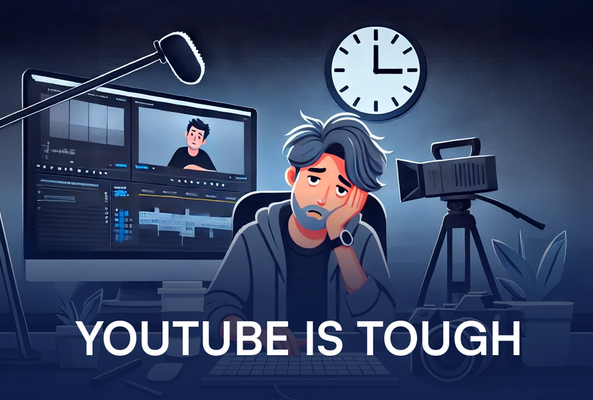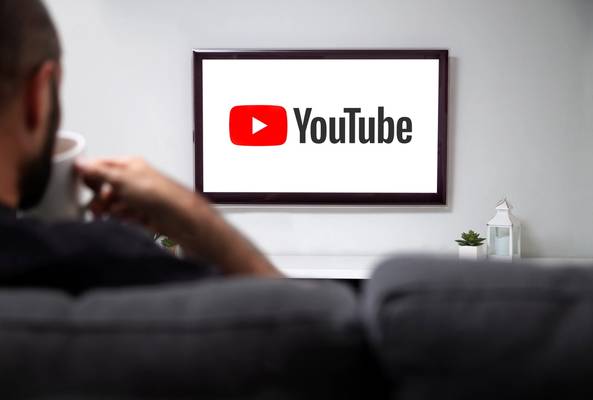In addition to being an avid movie and gaming enthusiast, Uttaran Samaddar is an experienced writer who has lent his creativity and unique perspective to various publications. He loves hearing and telling stories.
How to Effectively Write a YouTube CTA
We often talk about having certain goals through different stages of your YouTube journey which drives your motivation to create newer, better content. But what goals do you hope to achieve through every video?
Whether it is liking a video, subscribing to your channel, or purchasing a product, you want the viewer to engage with your content through an action. A Call to Action (CTA) is pivotal in turning passive viewers into active subscribers, loyal followers, and even paying customers.

When done right, they guide your audience to take the next logical and effective step. Let's dive into actionable strategies for integrating CTAs effectively within your YouTube content.
Stop Guessing. Start Growing.
Join 20M+ creators using vidIQ to get more views, subscribers, and success on YouTube.
Read More: How to Increase Audience Retention on Every YouTube Video
Why CTAs Matter on YouTube
A well-placed CTA is more than just a directive—it’s a crucial touchpoint that nudges viewers closer to your goals. Whether you're building a community or driving sales, your CTAs need to be clear, strategic, and aligned with your objectives. Without them, you're leaving potential engagement on the table.

Understanding how to add CTAs on YouTube effectively is not just about pushing buttons or asking for favors; it’s about guiding viewers through a seamless journey from content consumer to brand advocate.
Types of YouTube CTAs and Where to Use Them
The effectiveness of YouTube CTAs hinges on not just what you say but how and where you say it. Below are the key types of CTAs and the contexts in which they work best:
1. Verbal CTAs in Your Video
The most natural way to integrate a CTA is through spoken prompts during the video. Simple statements like “If you found value in this content, consider subscribing” or “Hit the like button if this tip helped you” should be strategically placed at instances when engagement is most likely. Typically, creators introduce these CTAs at the beginning of the video (to capture early engagement), the middle (where viewer interest is peaking), or the end (when summarizing and encouraging a final action).
2. On-Screen Text and Graphics
Visual reinforcement of verbal CTAs enhances their impact. Animations, like a "Subscribe" button or an arrow pointing toward the like button, can subtly remind viewers to take action without breaking the flow of your content. These visual cues should be tastefully done, complementing rather than distracting from the main message.
When considering how to add CTAs on YouTube effectively, consistent branding and appealing design play a critical role in ensuring your graphics align with your video’s overall aesthetic.
3. End Screens and Cards
YouTube’s built-in features like end screens and cards offer powerful ways to direct viewer actions. End screens can be used to promote related videos, and playlists, or direct users to specific links such as your website or a lead magnet.

Cards, on the other hand, provide clickable prompts at key moments in your video. For example, while discussing a relevant topic, a card can pop up offering additional information or a related video. However, use cards sparingly and time them carefully—too many or poorly placed cards can distract viewers and even lower retention rates.
Read More: YouTube End Screens: How to Make Cool Video Outros
4. Pinned Comments and Descriptions
Often overlooked, the video description and pinned comments are persistent CTAs that remain visible regardless of when someone watches your content. This space can be used to direct viewers to external resources, product pages, or community discussions.
Here, CTAs need clarity and conciseness—ensure that your message is direct and that your links are easy to find. Additionally, using pinned comments as a CTA hub allows you to engage with your audience directly while reiterating your primary message.
While all this may sound simple enough, crafting an effective YouTube CTA involves more than just a catchy phrase; it requires strategy. Here are some key considerations when optimizing your CTAs for maximum engagement.
Be Specific and Actionable
Clarity is key when encouraging viewers to take action. A vague statement like “Check out my website” is far less effective than “Visit my website for a free eBook on mastering YouTube analytics.” The more specific and actionable your CTA, the easier it becomes for your audience to follow through. Provide a clear benefit or value proposition that directly aligns with the content they just consumed.

Create Urgency (When Appropriate)
For time-sensitive offers or limited-time events, adding a sense of urgency can push viewers to act quickly. Phrases like “Join now before it’s too late” or “Subscribe today for early access” tap into the fear of missing out (FOMO), encouraging immediate action. However, use urgency sparingly; if overdone, it can feel disingenuous and lead to viewer fatigue.
Limit Choices
One of the biggest mistakes creators make is overwhelming viewers with too many CTAs at once. When faced with multiple options, viewers are likely to face choice paralysis. Instead, focus on one primary action per video that aligns most closely with your goals.
For instance, if you aim to grow your subscriber base, prioritize the “Subscribe” prompt over secondary actions like following on social media or downloading a guide. Consistency in your messaging will also reinforce this single focus throughout your content.
Align CTAs with Video Content
Your CTA should feel like a natural extension of the content, not a forced add-on. For example, a video tutorial on video editing might naturally lead to a CTA like, "Download my free preset pack," rather than an unrelated prompt like "Subscribe to the channel." The more seamless the integration, the higher the likelihood of conversion. This alignment also boosts viewer trust since your recommendations feel relevant and timely.
Tracking and Optimizing Your CTAs
Implementing CTAs is only half the battle; monitoring their performance is crucial for refining your approach. YouTube Analytics is your best friend in this regard, providing data on click-through rates (CTRs) for cards, end screens, and links. Regularly reviewing this data allows you to pinpoint what’s working and what isn’t. Experiment with different placements, wording, and designs until you find the combination that consistently drives results.
Read More: Getting a Good Click-Through Rate on YouTube: 6 Powerful Tips
For example, you might consider reallocating your CTA focus if you notice higher CTRs on end screens than on cards. Similarly, if certain phrases or prompts show better engagement, incorporate those into future content. Optimizing your strategy is an ongoing process that evolves as you gather more data and insights.
When used methodically, YouTube CTAs can be the catalyst that transforms passive viewers into active participants in your community. By adding clear, contextually relevant prompts at key moments, you can give your audience what they want the most and also do what matters most to your channel's growth.

The key is to remain consistent, test new approaches, and refine them based on what your analytics tell you. Keep testing, keep refining, and remember: a great CTA isn’t just about what you say—it’s about how, when, and where you say it.
Continue Reading: How to Grow Your YouTube Channel in 2024: The Ultimate Guide
20k+ 5 Star Reviews
Ready to put this into action?
Use vidIQ to find your next video idea, pick better keywords, and optimize every upload.






